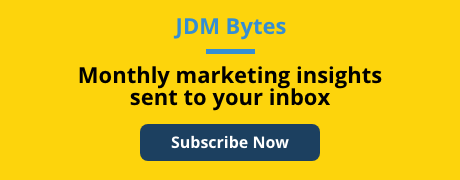Growing AI Search Visibility Phase 3: How to Earn and Increase Inclusion in AI Answers
As any Facebook advertiser with a few years of experience knows, iOS14 took a big bite out of audience precision. That means strategic creative and messaging is more vital than ever for engaging your best audiences, especially for D2C companies trying to break through the noise and catch consumers’ attention.
Before we get into the best practices we’ve developed over decades of collective Facebook work, remember that even the best creative gets stale over time, and you must make sure to test aggressively and religiously and continuously develop new themes to make sure your creative performs at its peak. To go beyond creative and learn more about data and campaign structures in the 2022 Facebook advertising landscape, download our new whitepaper, How to Succeed with D2C Facebook Advertising (note that much of the material applies to all verticals).
Let’s jump in.
Ad Creative
We aim to rotate in new ad creative on a weekly basis. We find that this helps keep performance more consistent by finding new “winners” before the old ones decay.
Here are a few options to test on the creative and messaging front:
- Ad types: images, videos, carousels, slideshows, gifs
- Creative styles: high production, product/service-focused, lifestyle, user-generated content (UGC), influencer content, testimonial videos, product or service comparisons
User-Generated Content
We’ve seen great success leveraging user-generated content. Not only is it much simpler, quicker, and more cost-effective to produce - but because that type of content feels more authentic, relatable, and less ad-like, we often see it outperform the more high-quality and high production content. With one client, we saw a 104% higher CTR leveraging UGC ad creative over their polished, product-focused creative.
Messaging
Even though the creative is the first thing users see, and therefore your best chance to grab attention, messaging is just as important. Here are some best practices we like to follow in testing messaging:
- Tailor all ad copy to the stage in the funnel
- Test different lengths and styles: short and direct, longer-form, emojis, etc.
- Cater to specific personas of your target audience
- Test different messaging angles: benefits, testimonials, comparing features with competing brands/products, tapping into customer problems or pain points, or using humor/entertainment. The goal is to find messaging angles that resonate with the consumer and persuade them to take action.
- Include offers and add a sense of urgency (“Sale expires in 3 days!”). This is especially powerful in getting already-engaged users to convert.
Landing pages
No matter how good your ads are, landing pages will make or break your performance. Here are some elements that we see as universal in our top-performing landing pages. Make sure to get to 1.0 with these, then A/B test different versions to see what increases conversion rate. (The data never lies.) We’ll use the Athletic Greens site to show examples of the following best practices:
- Simplify the path to conversion (the fewer steps the better)
- Include clear CTAs to drive the desired action
- Leverage social proof + testimonials to establish credibility
- Compose copy that is made to convert
- Make benefits and key features clear and prominent
- Create a sense of urgency to get consumers to act now
- Ex: “Last Chance to Save!”
- Include count-down timers if applicable or “only x number of products left!”
Optimization + Scale
So you’ve done the work and launched your campaign following the recommendations above. That’s just the beginning! Facebook advertising success relies on a constant, vigilant cycle of optimization and testing. Some rules particular to D2C:
- Cut losses and test new options rapidly. Be more aggressive than you would be with B2B or longer-cycle B2C (like insurance or financial planning) because purchase/conversion paths are shorter and quicker.
- Creative fatigue is real, so test new creative at least weekly.
- Scale what’s working. If the creative is proving profitable, consider increasing budgets in those areas. You can also take winning ads and “scale” them by utilizing them across new audiences.
- Let winning creatives run as long as they perform.
- Employ naming conventions that allow you to analyze data on different levels (audiences, creative, headline, copy, LP, CTA, offer, etc.). The best naming conventions are highly detailed, clean, and consistent.
- Example Campaign Name: JDM_FunnelStage_Geo_TrafficType_SecondaryDescriptor_Objective
- Example Ad Set Name:
Audience_platform_placement_gender_age_launchdate - Example Ad Name: CreativeType_CreativeDescriptor_CreativeID_HLDescriptor_HeadlineID_TextDescriptor_TextID
Great creative is a strong starting point for effective Facebook campaigns. To get our step-by-step recommendations on post-iOS data, audiences, placements, and more, download our full guide, How to Succeed in D2C Facebook Advertising, for a comprehensive strategy for Facebook-fueled growth in any vertical.

Oct 4, 2022 11:34:43 AM




-Dec-04-2025-09-58-32-5416-PM.png?width=500&height=500&name=Regular%20Blog%20Hero%20(1)-Dec-04-2025-09-58-32-5416-PM.png)
